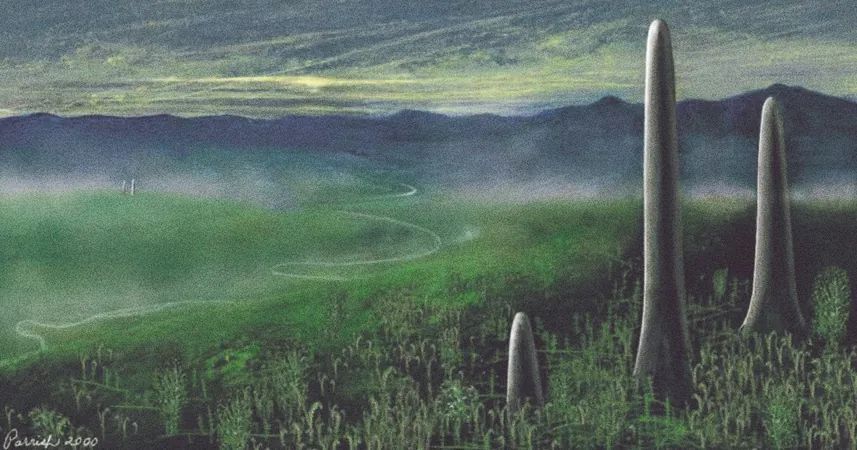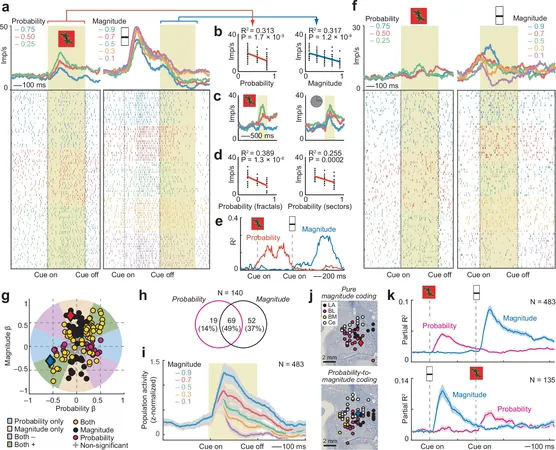
Mysterious Giants of the Past: Have We Discovered a New Kind of Life?
2025-03-29
Author: John Tan
Introduction
In a groundbreaking turn of events, scientists are positing that we may need to reevaluate the classification of ancient life forms, specifically a peculiar entity known as "prototaxites." Researchers at the University of Edinburgh have presented compelling evidence suggesting that this towering, tubelike fossil warrants its category due to its strikingly unique characteristics that defy classification within existing life forms.
Historical Background
Discovered in the 1800s, prototaxites have long baffled experts trying to determine their true nature. Initially believed to be remnants of decaying trees complemented by decomposition fungi, a notable shift occurred in 1872 when Canadian scientist William Carruthers proposed that the name “prototaxites,” meaning "first yew," be replaced with "nematophycus," which translates to "stringy algae." His hypothesis opened the door to numerous debates within the scientific community.
Recent Developments
Fast forward to 2007, when botanist Kevin Boyce analyzed carbon isotopes from prototaxites fossils, asserting that they must be a type of fungus given their apparent absorption of carbon from surrounding organisms. However, this new research led by Edinburgh’s Corentin Loron and colleagues is casting doubt on Boyce's findings. Their analysis of *Prototaxites taiti*, a smaller variant found in Scotland, suggests that these organisms may not fit into any recognized lineage.
Chemical Analysis
Loron’s team examined the chemical structure of *P. taiti* in an area where fungi thrived. Surprisingly, they found significant differences in the cellular makeup when compared to the local fungi. Notably, *P. taiti* lacked chitin, a critical component of fungal cell walls, leading researchers to conclude that it is not a fungus. Furthermore, its anatomy was fundamentally distinct from both contemporary and extinct fungi, urging the researchers to advocate for a separate classification.
Expert Opinions
Reflecting on the findings, Boyce acknowledged the substantial progress since his original claims, stating, “With the new information available, there is no good place for prototaxites in the fungal lineage.” He suggested that regardless of whether it was a type of fungus or something entirely different, the prototaxites represent an ancient experiment in multicellularity that diverged from the ancestors of contemporary life.
Extinction and Future Research
The extinction of prototaxites remains another puzzle yet to be solved, which adds an additional layer of intrigue to this already enigmatic organism. Researchers hope that continued investigation will shed light on both the life and eventual disappearance of these colossal beings.
Conclusion
As scientists delve deeper into the mysteries of our planet's past, they continue to confront the vast complexities of ancient life, further igniting our fascination with Earth's evolutionary history.
Further Research
Stay tuned for more astonishing discoveries in biology. In other exciting research, scientists have ingeniously modified mouse genes to integrate traits from woolly mammoths, showcasing the fascinating intersections of genetics and resilience!



 Brasil (PT)
Brasil (PT)
 Canada (EN)
Canada (EN)
 Chile (ES)
Chile (ES)
 Česko (CS)
Česko (CS)
 대한민국 (KO)
대한민국 (KO)
 España (ES)
España (ES)
 France (FR)
France (FR)
 Hong Kong (EN)
Hong Kong (EN)
 Italia (IT)
Italia (IT)
 日本 (JA)
日本 (JA)
 Magyarország (HU)
Magyarország (HU)
 Norge (NO)
Norge (NO)
 Polska (PL)
Polska (PL)
 Schweiz (DE)
Schweiz (DE)
 Singapore (EN)
Singapore (EN)
 Sverige (SV)
Sverige (SV)
 Suomi (FI)
Suomi (FI)
 Türkiye (TR)
Türkiye (TR)
 الإمارات العربية المتحدة (AR)
الإمارات العربية المتحدة (AR)